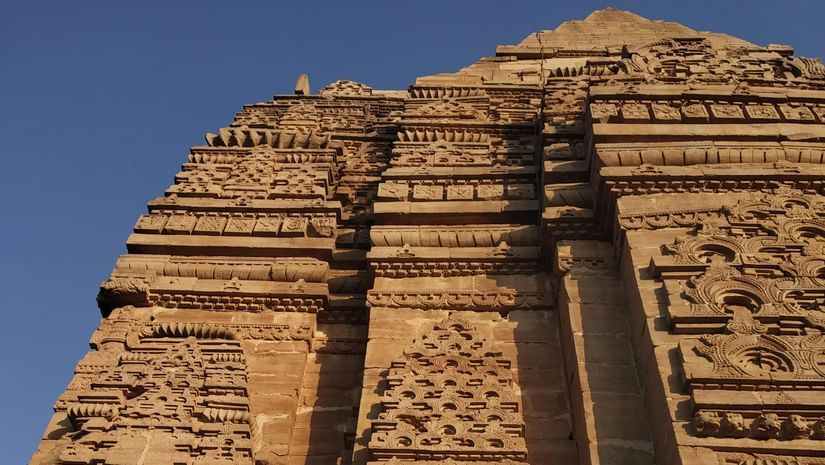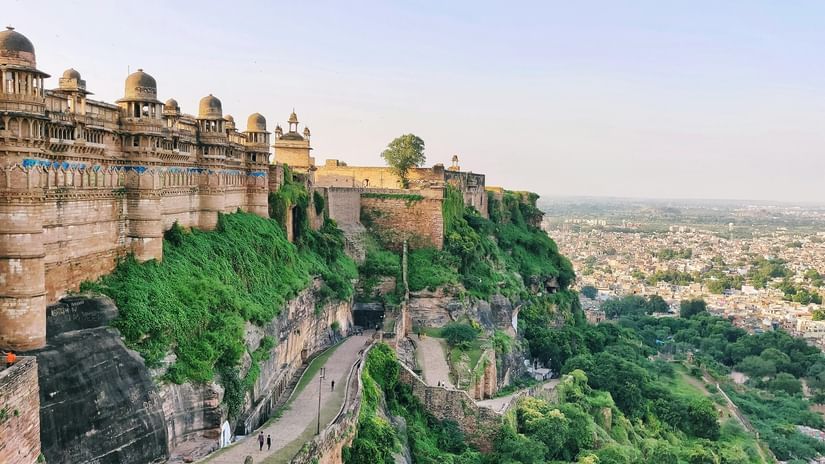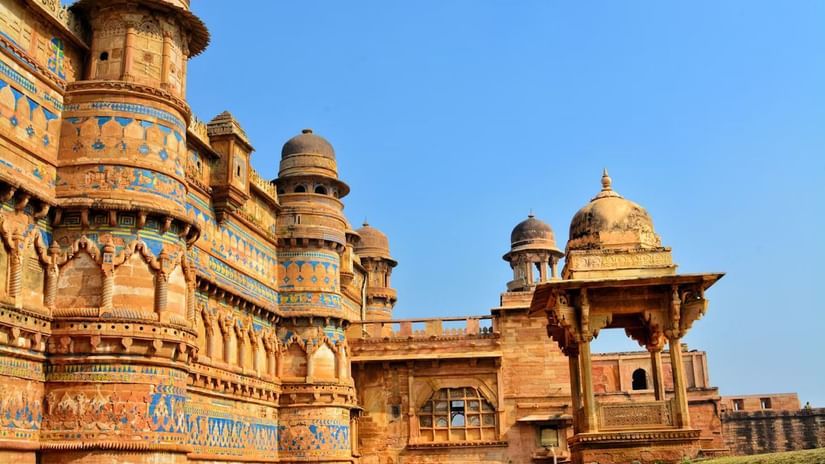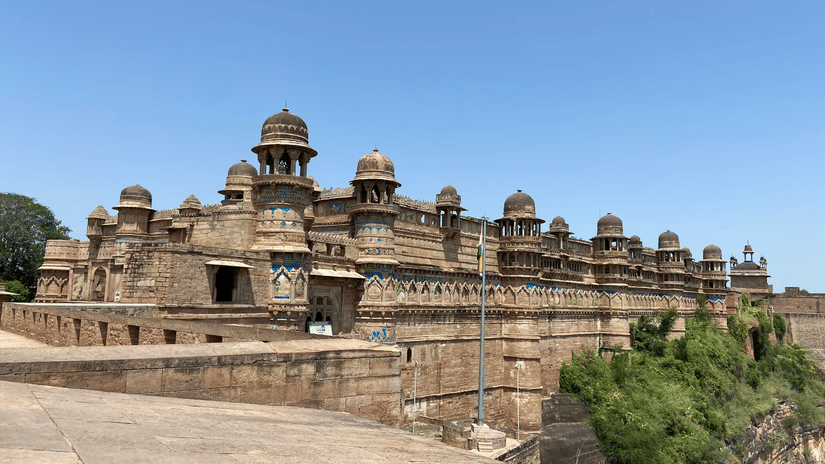- Shopping in Kochi
- New Year Celebration in Rajasthan
- Christmas in Goa
- Trip from Delhi to Alwar
- New Year Celebration in Goa
- History of Maratha Empire
- New Year in Kochi
- Places of Interest in Gwalior
- Bala Quila, Alwar
- Jet Ski in Goa
- Paradesi Synagogue, Kochi
- Explore Gwalior Fort
- Visiting the Vast History: Kochi Mattancherry Palace
- Heritage Wedding in Rajasthan
- Tourist Attractions in Gwalior
- Hotel in Tijara
- Cabo De Rama Beach
- Matsya Festival
- Trip from Bangalore to Goa
- Tourist Attractions in Patiala You Shouldn't Miss
- Jagannath Mela in Alwar
- Waterfalls in Goa
- Ideal Places for a Short Trip near Delhi
- Hidden Gems in Rajasthan
- Delhi to Sariska National Park: Trip Guide
- Traveller’s Guide to Goa Carnival
- Weekend Trip from Gurgaon
- Trip to Rajasthan with Family
- Delhi to Rishikesh to Nainital
- Delhi to Patiala Tour Guide
- New Year Celebration Near Delhi NCR
- Christmas Celebration in Tijara Fort Palace, Alwar, Rajasthan
- Nainital in the Winter Season
- Sunburn Goa 2024
- Trip to Alwar
- Water Sports in South Goa
- New Year Eve Party in South Goa
- Moosi Maharani Ki Chhatri
- Siliserh Lake
- Must try dishes in Rajasthan
- Best Places to Visit around Jaipur
- Solo Trip to Rajasthan
- Sariska National Park
- Places to visit in Rajasthan in December
- Staycation Near Delhi NCR
- Best Holiday Destinations Near Delhi
- Best Resorts Near Delhi for Family
- Vacations near Delhi
- Goa in Summer Season
- Naina Devi Temple, Nainital
- Best Time to Visit Rishikesh
- Tijara Ji Jain Temple
- Must Visit Historical Sites in South Goa
- Local Food in South Goa
- Traditional Festivals of Rajasthan
- Naina Peak Trek
- Fatehpur Shekhawati
- Activities in Nainital
- Local Food in Tranquebar
- Alwar Famous Food
- Offbeat Places in Nainital
- Offbeat Places in South Goa
- Offbeat Places in Rajasthan
- History of Tharangambadi
- Best time to visit Nainital
- Best Beaches in South Goa
- History of Shekhawati
- The Best Beaches in Tamil Nadu
- Places to Visit in Shekhawati
- New Year Celebration in Nainital
- Weekend Trip in Tamil Nadu
- New Year in Goa
- Nainital Itinerary for 2 Days
- The Best Places to Visit in Patiala
- Places to Visit in Tharangambadi
- South Goa Itinerary for 3 Days
- Tourist Attractions in Alwar
- Kochi 2-day Itinerary
- Things to Do in South Goa
- Places to Visit in Gwalior
- Weekend Getaway from Jaipur
- Best Places to Visit in Alwar
- Best Time to Visit Alwar
- Places to Visit in Alwar
- Best Time to Visit Gwalior
- Literary Connections of Ramgarh: Tagore and Mahadevi Verma
- Things to Do in Alwar in Monsoon
- Exploring the Festivals of Alwar
- Everything You Need to Know About Betul, Goa
- Things to Do in Kochi at Night
- Uttarakhand Itinerary for 7 Days
- Best Time to Visit Kochi
- Visit The Mesmerising Hill Stations in South India
- The Best Places to Visit Near Nainital
- A Weekend Getaway to Ramgarh: Travel Guide
- Explore The Magical Cochin Backwaters
- The Majestic Coonoor to Ooty Toy Train
- The Best Vacation Spots Near Chennai
- Must Visit Places in Kerala
- Destination Wedding in Rajasthan
- Exploring the Orchards in Ramgarh
- Explore the Museums of Tranquebar
- Masilamani Nathar Temple, Tharangambadi
- Things to Do in Kesroli
- Best Places to Visit in South India in January
- Exploring the Tamil Nadu Coastline
- Places to Visit in Gwalior at Night
- Places to visit in Rajasthan in Winter
- Unexplored Treasures of Uttarakhand
- A Visit to Mangalavanam Bird Sanctuary
- Royal Rajasthani Weddings
- Rajasthan Itinerary for 7 days
- Into the Wilderness of Rajasthan’s National Parks
- Explore the Historic Town of Neemrana, Rajasthan
- Enchanting Lakes of Nainital
- A Dive Into the Royal History of Alwar
- Trails and Treks near Nainital
- The Seven Most Frequented Places in Rishikesh
- Kochi: The Queen of the Arabian Sea
- Fairy Queen: The Oldest Working Steam Locomotive
- Forts and Palaces of Alwar
- The Unparalleled Art and Culture of Madhya Pradesh
- Best Beaches To Visit in Cochin
- A Spiritual Journey to the Temples in Alwar
- Handicrafts of Rajasthan
- Places to Eat Street Food in Gwalior
- Wellness Retreats in Rishikesh
- The Danish History of Tranquebar
- Of Mystical Spaces and Hidden Treasures
- Rehabilitating Our Roots in Ruins... A Meet with Mr Aman Nath
- Our Annual Getaway to the Ramgarh Bungalows
- Experience Gwalior The Royal Way With Deo Bagh
- Living it up at a 14th Century Fort
- The Best of Both Worlds - Delhi and Jaipur
- Alwar City - Attractions
- Gwalior - The Tourist Capital
- Drivable Weekend Getaway from Delhi-NCR
- Hiking and Trekking Trails near Jaipur
- Safe Weekend Getaway from Delhi
- Trek Trails from Rishikesh
- Things to do Around Tranquebar Fort
- Majestic Temples of Gwalior
- Tea Plantations of Coonoor
- Fort Stay in Alwar
- Best Places to Visit in Tamil Nadu
- Shopping in Gwalior
- The Chinese Fishing Nets of Kochi
- Exotic Swimming Experiences near Delhi
- Ketty Valley, The Second Largest Gorge in the World
Gwalior Fort, perched high on Gopagiri Hill in Madhya Pradesh, is one of India’s most impressive and historic forts, with origins tracing back to the 6th century AD. Dubbed “the pearl among fortresses of Hind” by the Mughal emperor Babur, it has been shaped over the centuries by many powerful dynasties, including the Tomars, Mughals, Marathas, and Scindias. Built as both a stronghold and a symbol of pride, the fort features grand palaces, ancient temples, and massive stone walls, making it not only a centre of power but also a living piece of India’s rich cultural and architectural heritage.
Gwalior Fort History and Architectural
1. Architectural Grandeur of the Palaces
The fort is home to six remarkable palaces that reflect a blend of artistic styles and royal tastes. The Man Mandir Palace, built by Raja Man Singh Tomar, is the most celebrated, known for its colourful tile work, ornate carvings, and jharokhas. Gujari Mahal, constructed for his queen, Mrignayani, stands lower on the hill and now serves as an archaeological museum. Karan Mahal and Vikram Mahal represent the continued contributions of the Tomar dynasty. The Mughal additions—Jahangir Mahal and Shah Jahan Mahal—introduce elements of Persian-inspired elegance, completing the fort’s regal profile.


2. Sacred Spaces and Sculptural Wonders
Spirituality is deeply embedded in the fort's architecture. The Teli-ka-Mandir, built between the 8th and 9th centuries, is unique in its fusion of Dravidian and Nagara architectural styles. Close by are the Saas-Bahu temples, intricately carved and dedicated to Vishnu, dating back to the 11th century. Perhaps most striking are the rock-cut Jain sculptures on Siddhachal and Gopachal hills. These towering figures of Tirthankaras, many of which were created under the Tomars, demonstrate the region’s deep-rooted Jain heritage and artistic brilliance.
3. Defensive Strength and Design
Gwalior Fort was designed as a military stronghold, and its defences are both imposing and intelligent. Massive ramparts surround the hilltop, offering protection and strategic advantage. Several grand gateways—such as the Elephant (Hathi) Gate, Badalgarh Gate, Ganesha Gate, and Hindola Gate—were constructed to control access and enhance security. Within the fort, a system of large water reservoirs ensured a sustainable supply, capable of supporting a garrison of over 15,000 soldiers during prolonged sieges.


4. Preservation and Legacy
Today, Gwalior Fort is not only a symbol of architectural and historical brilliance but also a well-preserved heritage site. The Gujari Mahal now houses a museum that displays artefacts, sculptures, and historical relics from across the centuries. Managed by the Archaeological Survey of India, the fort continues to be maintained as a cultural landmark, attracting visitors, historians, and scholars from around the world.
A Key Landmark of India’s Architectural, Religious, and Political Heritage
Let’s explore the story behind Gwalior Fort. History says that this majestic fort has stood for over 14 centuries, boasting a blend of art, politics, and architecture. Its walls and palaces, including the Man Mandir Palace with its vibrant tiles and the large rock-carved Jain sculptures, demonstrate detailed craftsmanship. The fort’s gateways, such as the Elephant Gate and Ganesha Gate, reflect the influence of various dynasties, including the Tomars, Mughals, Marathas, and Scindias, making it a significant cultural landmark in India. The fort holds significant religious value for Jainism, Hinduism, and Sikhism. Temples like Teli-ka-Mandir and the Saas-Bahu shrines represent its Hindu heritage. At the same time, the Jain statues and nearby Data Bandi Chhor Gurudwara highlight its importance in Jain and Sikh traditions. Historically, the fort served as a prison under Emperor Akbar and played a key role in battles involving the Marathas, British, and Scindias. This unique blend of art, culture, and religion makes the site an enduring chapter in India’s cultural tapestry.


Your Heritage Stay Near Gwalior Fort
About 4 km away from the majestic Gwalior Fort, visitors seeking an immersive heritage experience can retreat to Deo Bagh, nestled within beautifully maintained gardens and showcasing exquisite Mughal-inspired architecture. The property features open courtyards, a graceful Baradari pavilion, and family temples that reflect its deep-rooted history and spiritual significance. The retreat offers 15 elegantly appointed rooms, each named after royal lineage, blending historic charm with modern comforts to provide an intimate and authentic experience. Guests can savour carefully prepared à la carte meals, unwind in tranquil surroundings, and visit the peaceful in-house temple, making Deo Bagh a unique sanctuary where heritage, spirituality, and contemporary hospitality come together seamlessly.
Gwalior Fort and Deo Bagh offer more than history—they bring to life the royal heritage of India. The fort, with its majestic architecture and centuries of cultural significance, stands as a powerful testament to the past, while Deo Bagh provides a peaceful haven where tradition and modern comfort blend effortlessly. Together, they create a memorable journey that lets travellers truly experience the rich heritage and enduring charm of Gwalior.